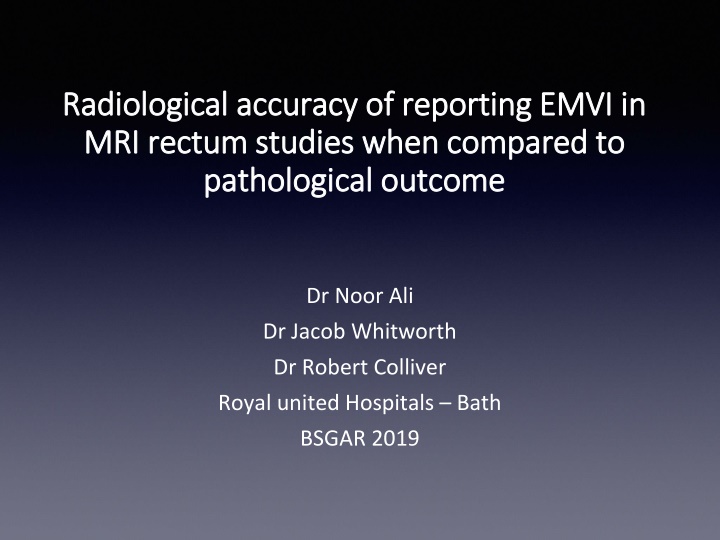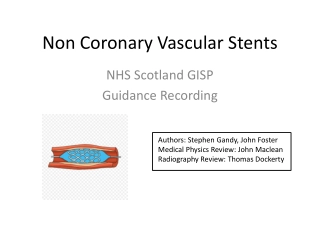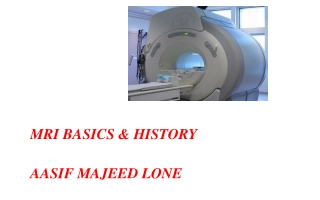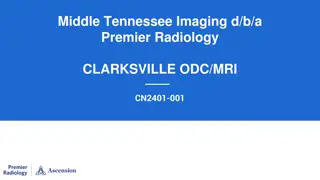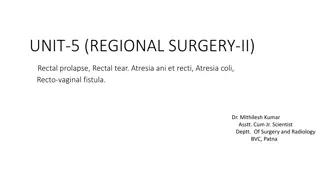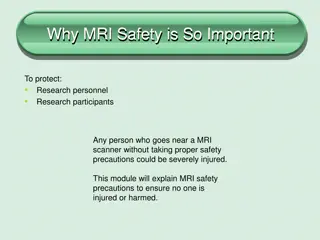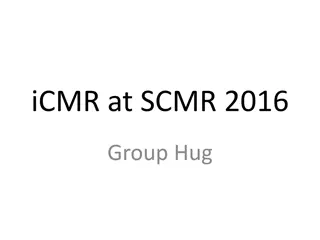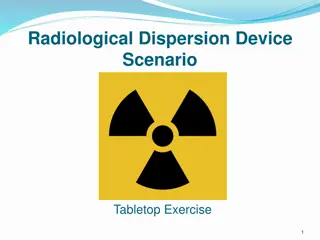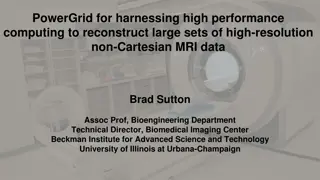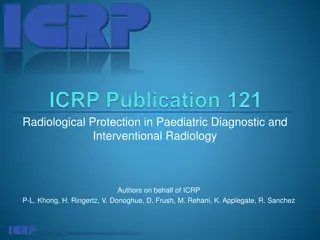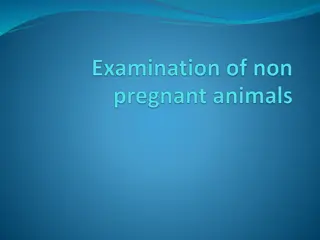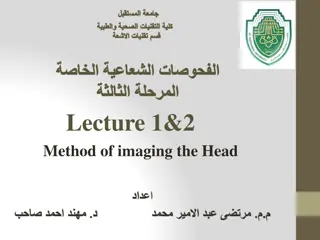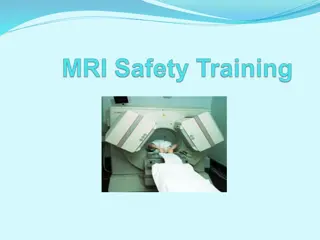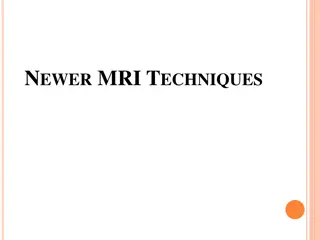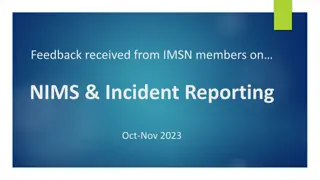Radiological Accuracy of EMVI Reporting in Rectal MRI Studies
Extramural Vascular Invasion (EMVI) in rectal cancer is a crucial factor in prognosis and treatment decisions. This study evaluates the accuracy of EMVI reporting in MRI studies compared to pathological outcomes. Results show the sensitivity, specificity, and predictive values of MRI in predicting EMVI status. The correlation of EMVI status with T and N stages is also discussed.
Download Presentation

Please find below an Image/Link to download the presentation.
The content on the website is provided AS IS for your information and personal use only. It may not be sold, licensed, or shared on other websites without obtaining consent from the author.If you encounter any issues during the download, it is possible that the publisher has removed the file from their server.
You are allowed to download the files provided on this website for personal or commercial use, subject to the condition that they are used lawfully. All files are the property of their respective owners.
The content on the website is provided AS IS for your information and personal use only. It may not be sold, licensed, or shared on other websites without obtaining consent from the author.
E N D
Presentation Transcript
Radiological accuracy of reporting EMVI in Radiological accuracy of reporting EMVI in MRI rectum studies when compared to MRI rectum studies when compared to pathological outcome pathological outcome Dr Noor Ali Dr Jacob Whitworth Dr Robert Colliver Royal united Hospitals Bath BSGAR 2019
Introduction Introduction Extramural vascular invasion (EMVI) is the presence of tumour cells in blood vessels beyond the muscularis propria of the rectum Histopathological EMVI status is an independent predictor of prognosis1 Can help guide treatment options 2 Routinely evaluated in MRI rectum studies as part of staging
Fig 2: EMVI -ve T2 TSE axial Fig 3: EMVI +ve T2 TSE axial
Methodology Methodology 2 year single centre retrospective study (323 Rectal MRs) All rectal MR with rectal cancer and subsequent surgical resection included (56 of 323) MRI protocol: T1 (axial large FOV + axial 3mm), T2 (sag, axial and coronal 3mm), DWI axial If pre-surgical chemoradiotherapy last pre-op MRI evaluated mrEMVI status obtained from radiology report positive or negative pEMVI status obtained from histology report positive or negative
Results Results Total 56 studies included 11/56 had treatment before surgery Led to change in EMVI status in 3 patients Total positive mrEMVI 17/56 12/17 positive pEMVI (70%) Total negative mrEMVI 39/56 23/39 negative pEMVI (59%) Accurate mrEMVI prediction - 35/56 (63%)
Results Results True positive 12/56 (21%) True negative 23/56 (41%) False positive (overstage) 5/56 (9%) False negative (understage) 16/56 (29%) Sensitivity 43% Specificity 82% Positive predictive value 71% Negative predictive value 59%
Correlation with T and N stage Correlation with T and N stage Much higher association of positive pEMVI status with T3 + disease and nodal involvement (pathology) : 72% in T3 disease 100% in T4 disease (17% T1, 14% T2) 63% in N1 disease 100% in N2 disease (32% N0)
Discussion Discussion Is 63% accuracy acceptable? Lower than published figures of 80-83.5%3-4 Binary question Relatively poor sensitivity of 43% Similar to published figures of 28-62%1,3,4 High false negative rate High specificity of 82% also similar to published data (88-96%1-3) Higher association of positive EMVI with T3+ tumours and nodal involvement, as expected
Discussion Discussion Potential technical factors causing inaccurate mrEMVI: Poor spatial resolution of scanner for small vessel EMVI (< 3 mm) Partial volume effect Oedema, inflammation and desmoplastic reactions, especially post-chemo/radiotherapy, can mimic EMVI and lead to over-calling 5
Fig 4:EMVI +ve? T2 TSE axial Fig 5: EMVI +ve? T2 TSE axial
Discussion Discussion Potential reasons for inaccurate mrEMVI reporting: Subjective differences in interpretation of mrEMVI parameters Multiple reporters with varying experience Lack of standardised guidance on the interpretation There is a suggested EMVI scale - 0 to 4, however this is still delineated into positive and negative 1
Smith NJ, Barbachano Y, Norman AR, Swift RI, Abulafi AM, Brown G. Prognostic significance of magnetic resonance imaging-detected extramural vascular invasion in rectal cancer. Br J Surg. 2008;95(2):229 36.
Limitations Limitations Retrospective study Limited numbers Pathology taken as gold standard but may not be accurate high grade vascular invasion may destroy the original vascular structure 5 Interpretation of post-CRT EMVI status can be difficult/controversial
Conclusion Conclusion Accuracy of mrEMVI can be somewhat limited with poor sensitivity EMVI should be interpreted with caution when making treatment decisions May be a role in incorporating other supplementary imaging techniques to increase accuracy of EMVI reporting e.g. gadolinium enhancement, 3T MRI, supervised scans 5
References References 1. Smith NJ, Barbachano Y, Norman AR, Swift RI, Abulafi AM, Brown G. Prognostic significance of magnetic resonance imaging-detected extramural vascular invasion in rectal cancer. Br J Surg. 2008;95(2):229 36. 2. Battersby NJ et al (MERCURY II Study Group); Prospective Validation of a Low Rectal Cancer MRI Staging System and Development of a Local Recurrence Risk Stratification Model. Annals of Surgery. 2016; 263(4): 751-760. 3. Sohn B, Lim J seok, Kim H, Myoung S, Choi J, Kim NK, et al. MRI-detected extramural vascular invasion is an independent prognostic factor for synchronous metastasis in patients with rectal cancer. Eur Radiol. 2015;25(5):1347 55. 4. Jhaveri KS, Hosseini-Nik H, Thipphavong S, Assarzadegan N, Menezes RJ, Kennedy ED, et al. MRI detection of extramural venous invasion in rectal cancer: Correlation with histopathology using elastin stain. Am J Roentgenol. 2016;206(4):747 55. 5. Tripathi P, Rao SX, Zeng MS. Clinical value of MRI-detected extramural venous invasion in rectal cancer. J Dig Dis. 2017;18(1):2 12.
Thank you! Questions?
